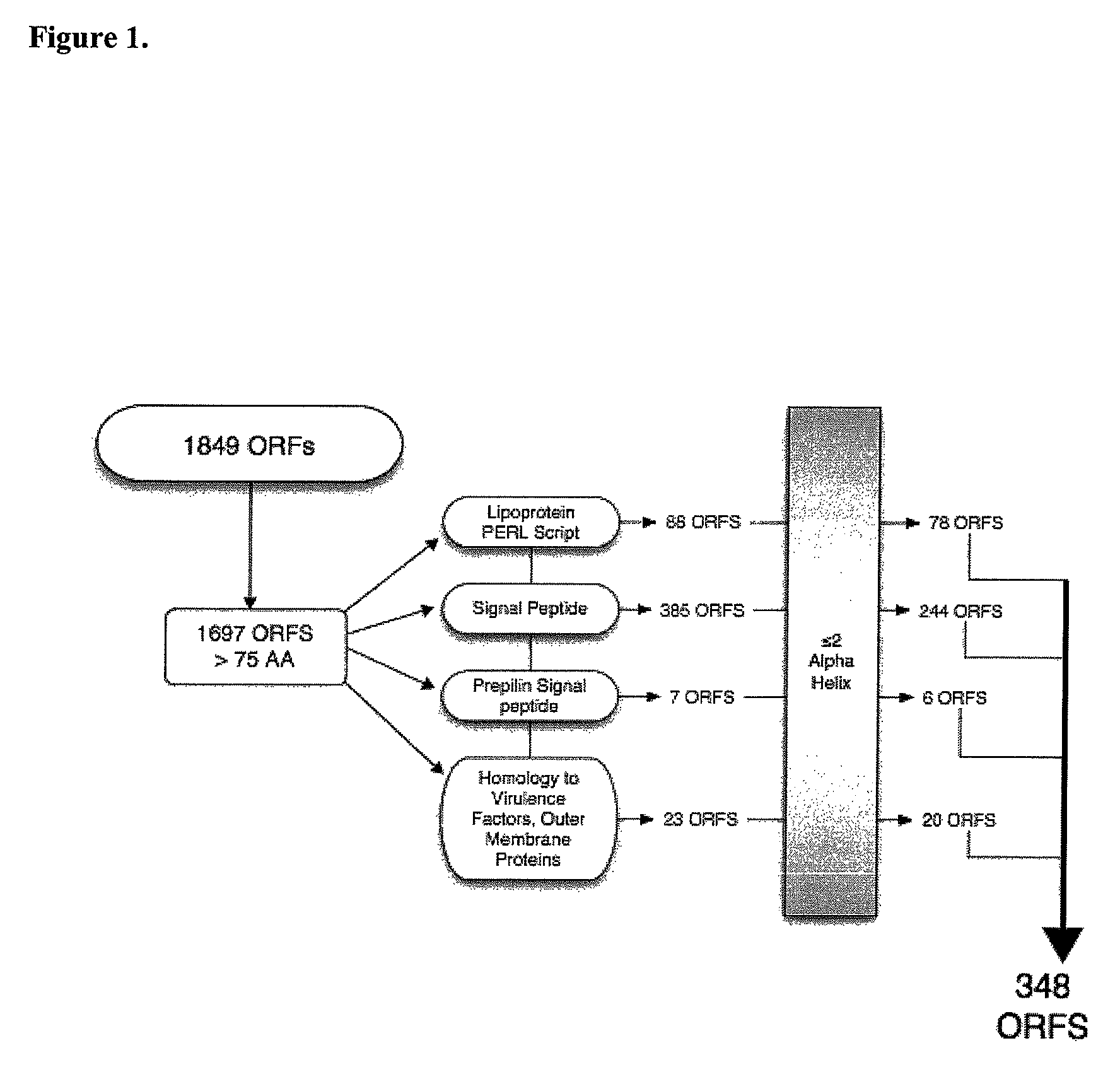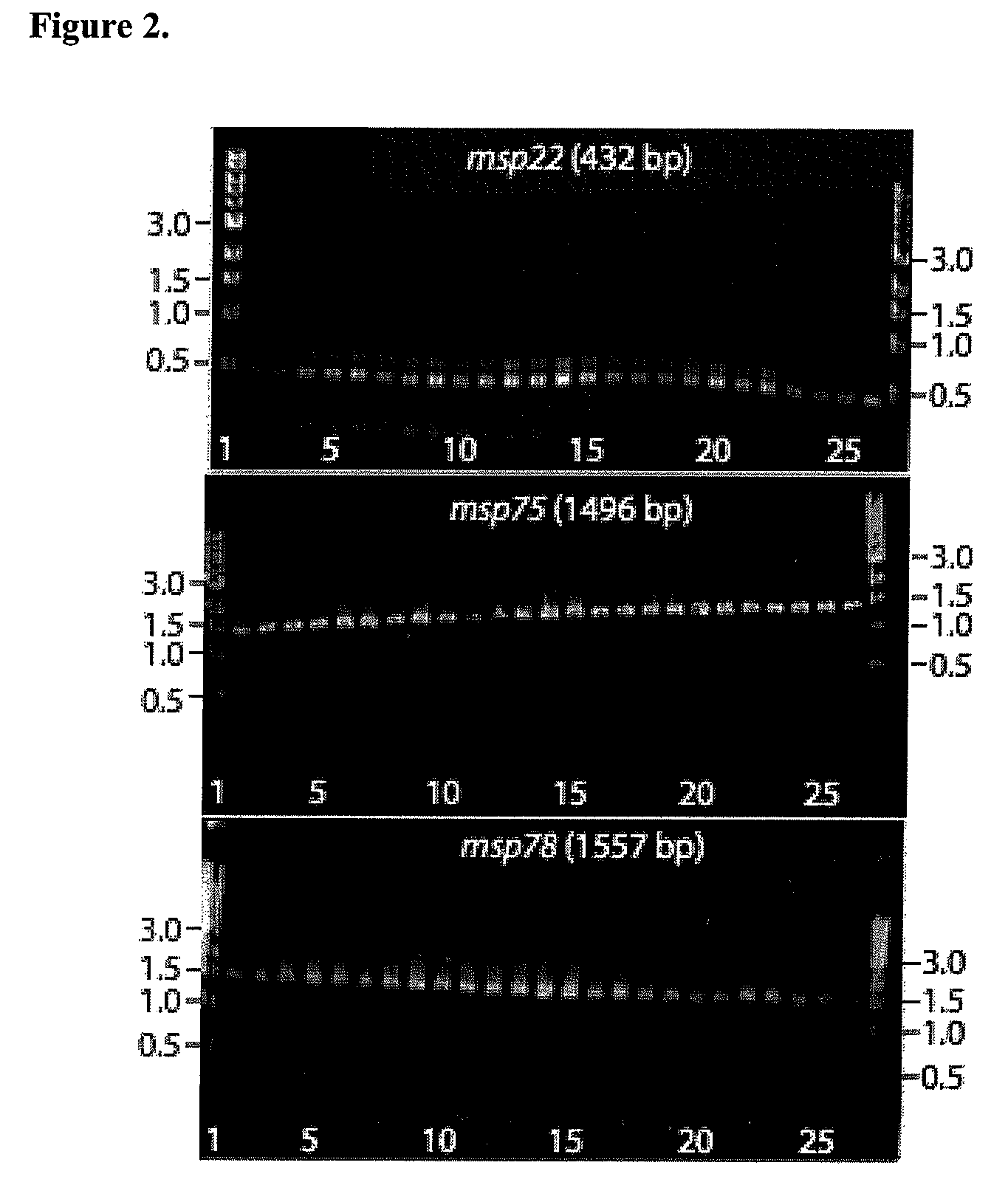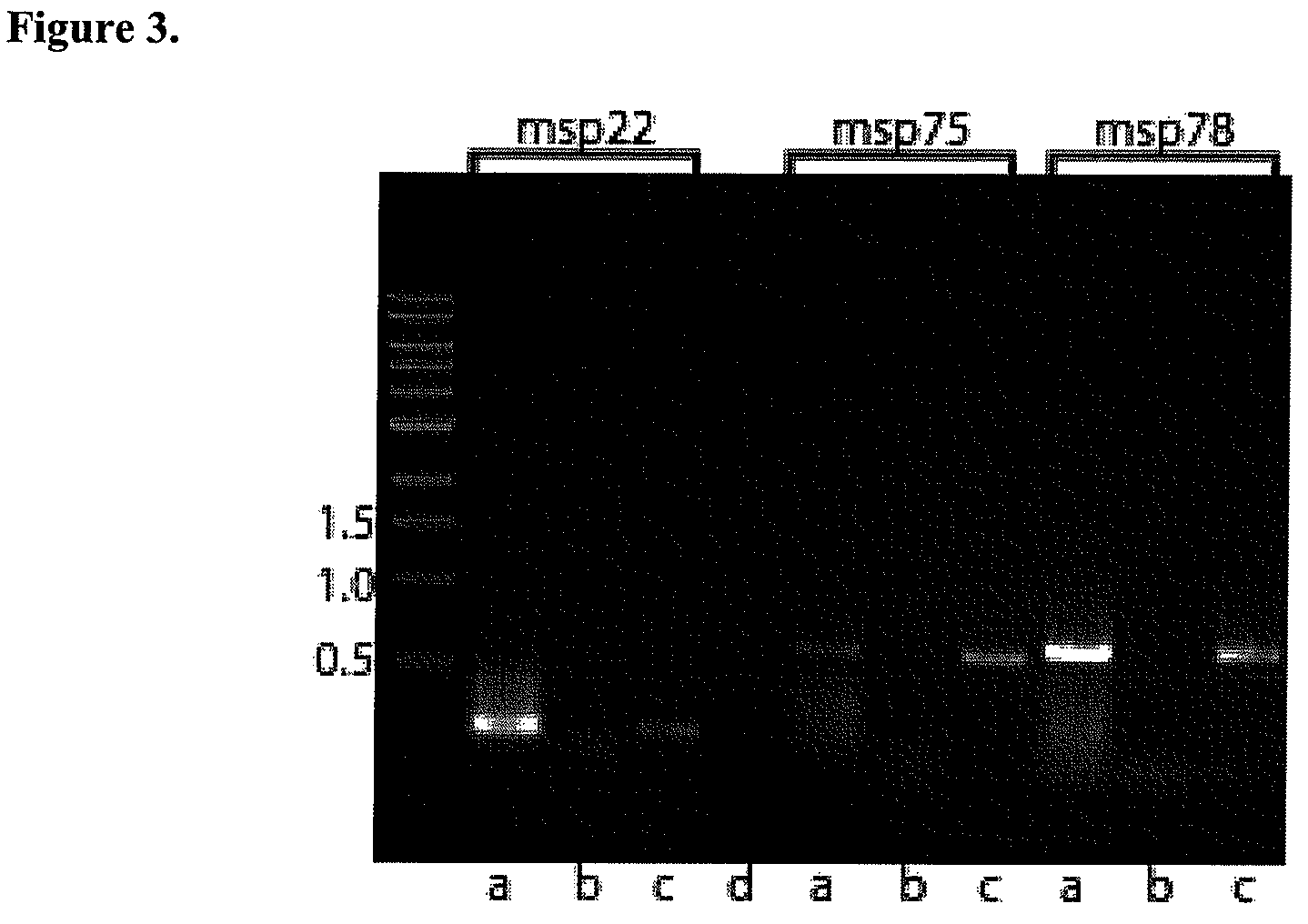Method for stimulating immune response against Moraxella catarrhalis
a technology of moraxella catarrhalis and immune response, which is applied in the field of stimulating an immune response against m . catarrhalis bacteria, can solve the problems of no such method available, and achieve the effect of increasing the rate of m
- Summary
- Abstract
- Description
- Claims
- Application Information
AI Technical Summary
Benefits of technology
Problems solved by technology
Method used
Image
Examples
example 1
[0039]This Example provides and description of the Materials and Methods used to obtain the data presented in Example 1 through Example 8.
[0040]Sequence analysis. The genome of strain ATCC 43617 was analyzed using 41 contigs deposited in the GenBank database (Accession numbers AX067426 through AX067466). GeneMarkS was used to identify open reading frames (ORFs) from the genome sequence (Besemer, Jet al. 2001. Nucleic Acids Res. 29:2607-2618). Potential lipoproteins were identified using a PERL script based on sequences described in the Prosite database (www.us.expasy.org). SignalP was used to identified ORFs with signal sequences characteristic of membrane proteins and secreted proteins (Emanuelsson, et al. 2007. Nat. Protoc. 2:953-971). Type IV signal peptides were identified with an in-house PERL script. Searches of annotations from the April 2003 Genbank protein database revealed 13,536 bacterial proteins with the expressions outer membrane protein, secreted protein, and virulenc...
example 2
[0061]Identification of ORFs that encode putative surface proteins. The genome of strain ATCC 43617 was analyzed using 41 contigs available in the GenBank database. The unassembled DNA fragments had a total length of 1,913,584 bp, which matched the calculated genome size of 1,750,000 to 1,940,000 bp determined experimentally by pulsed field gel electrophoresis (Nguyen, K. T., et al. Can. J. Microbiol. 45:299-303; (Furihata, K., et al. 1995. Microbiol Immunol 39:745-751). Using the GeneMarkS program, a total of 1849 ORFs of sizes ranging from 42 to 1946 bp were obtained. The minimum length ORF was chosen to be 225 bp, making the smallest encoded protein 75 amino acids. This method yielded 1697 ORFs in the M. catarrhalis genome.
[0062]Several approaches were used to determine the ORFs likely to encode proteins that are processed to the bacterial surface, as surface exposed proteins would represent potential vaccine antigens. ORFs were analyzed to identify lipoproteins; 88 were identifi...
example 3
[0063]Analysis of putative genes for sequence conservation. The 348 ORFs found by sequence analyses were amplified by PCR from strain 43617 template DNA and the products were spotted on a microarray. Ten genes that encode previously identified outer membrane proteins were studied to optimize conditions (UspA1, UspA2, TbpA, TbpB, CopB, LbpA, OMP CD, OMP E, OMPG1a, and OMP G1b). These 10 genes were predicted to be potentially surface localized by genome analysis. Genomic DNA of the homologous 43617 strain was labeled with Cy5 and genomic DNA from 4 different competing strains (25240, O35E, 4223, 25238) were labeled individually with Cy3. These strains were selected because the sequences of the 10 test genes are known for these strains and thus could be used as controls when analyzing the results. Microarrays were probed simultaneously with DNA from the reference strain (43617) and DNA from each of the 4 test strains individually and the red / green ratio was determined to assess the seq...
PUM
| Property | Measurement | Unit |
|---|---|---|
| diameter | aaaaa | aaaaa |
| diameter | aaaaa | aaaaa |
| pH | aaaaa | aaaaa |
Abstract
Description
Claims
Application Information
 Login to View More
Login to View More - R&D
- Intellectual Property
- Life Sciences
- Materials
- Tech Scout
- Unparalleled Data Quality
- Higher Quality Content
- 60% Fewer Hallucinations
Browse by: Latest US Patents, China's latest patents, Technical Efficacy Thesaurus, Application Domain, Technology Topic, Popular Technical Reports.
© 2025 PatSnap. All rights reserved.Legal|Privacy policy|Modern Slavery Act Transparency Statement|Sitemap|About US| Contact US: help@patsnap.com



